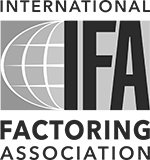How Lending Fees and Terms Matter – Part One

Not all alternative or asset-based lenders are equal. Our industry relies on high quality referrals and for that reason it is imperative that referral partners and prospective clients themselves become familiar with the terms and fees that make each alternative lender different. Appearances might be very misleading.
Terms, fees and responsiveness are generally the most relevant aspects of the relationship between us and our clients. As their funding partner, clients rely on our ability to support their growth, seize new opportunities, cover immediate financial needs and sometimes provide a life line. We take these relationships very seriously and so should our referral partners and prospective clients, therefore we will cover some of the key elements regarding alternative business lending terms and fees.
Pricing is often a top concern for our clients whether they are interested in asset-based lending, factoring of AR, PO and inventory financing, equipment financing or leasing. Unfortunately, the apparent “ticket price” is very frequently misleading. Many alternative lenders have a number of different fees, some are disclosed at closing when everyone is rushing to get funding done. Even worse, fees are frequently hidden in sophisticated lawyerly language that hardly anyone can understand.
Fees are generally split in 3 phases, at the time of application, during the relationship and upon termination. Application fees normally include origination, underwriting, legal and sometimes appraisal and/or audit fees. Only occasionally these are waived as they cover actual costs incurred. However, I have seen these range significantly between lenders. Application fees must be fully discussed prior to any engagement as they can get very expensive.
Fees charged during the relationship may include processing, discount, cost of funds, delays, misdirection, missing information, funds employed, anniversary, wire and the list goes on and on. Some of these fees could be considered hidden and can be extremely confusing to the client. To make it worse, these may be unexpected causing cash flow problems as well as complicating budgeting and planning. Unfortunately, these fees can stack on top of each other and may be assessed with little to no transparency to the client. Some fees can also be affected by floating days, or may apply in blocks of days rather than daily.
Termination fees may be assessed too. These apply when the lender offers a facility with a minimum term period and the client wants to terminate it earlier. Business owners and referral sources should be very cautious with these fees, particularly in situations when the company is planning on moving on to conventional lending. Unfortunately, I have seen termination fees that are extremely onerous, up to 40% of the yearly fees incurred. Sometimes the lender rolls the termination date indefinitely, locking the client in the relationship and thwarting its transition.
I hope you learned something valuable today. In the next edition we will cover what terms should be carefully looked at when comparing alternative lending options.



